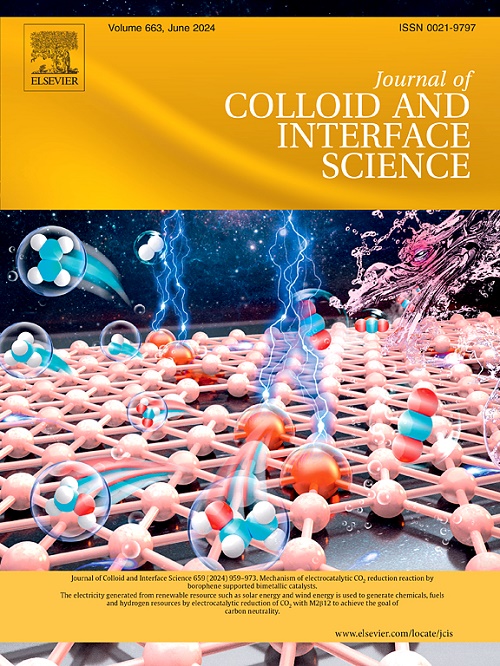Competitive adsorption and strain modulation induced by low electronegative elements to improve phosphate tolerance in HT-PEMFC
IF 9.4
1区 化学
Q1 CHEMISTRY, PHYSICAL
引用次数: 0
Abstract
The cathode Pt-based electrocatalyst, a core component of high-temperature proton exchange membrane fuel cells (HT-PEMFCs), significantly influences fuel cell efficiency. At high temperatures and strongly acidic pH, phosphoric acid tends to adsorb onto the Pt surface by forming Pt![]() O bonds, covering the catalyst’s active sites. Phosphoric acid anions’ toxicity towards Pt significantly impairs the oxygen reduction reaction (ORR) kinetics, posing a major obstacle to the commercial viability of this technology. In this study, we activated the carbon layer by introducing boron (B) to anchor intermetallic compounds clusters, which competitively adsorb desorbed phosphate anions in HT-PEMFCs. This approach mitigates phosphoric acid poisoning. Additionally, the core–shell configuration induces compressive strain in PtMn intermetallic compounds, inhibits transition metal solvation, and regulates the d-band center, optimizing the adsorption energy of oxygen reduction intermediates and enhancing the catalyst’s activity and stability in high-temperature phosphoric acid. At 80 °C, experiments showed the E1/2 value of PtMn/BC was 0.854 V, 53 mV higher than commercial Pt/C. Additionally, the mass activity (MA) and specific activity (SA) were 5.2 and 2.6 times higher than those of commercial Pt/C, respectively. The maximum power density of the HT-PEMFC in an H2/O2 atmosphere reached 1108.3 mW cm−2, significantly higher than that of commercial Pt/C. This value is also higher than most reported ORR catalysts, demonstrating the potential of this catalyst for HT-PEMFC applications.
O bonds, covering the catalyst’s active sites. Phosphoric acid anions’ toxicity towards Pt significantly impairs the oxygen reduction reaction (ORR) kinetics, posing a major obstacle to the commercial viability of this technology. In this study, we activated the carbon layer by introducing boron (B) to anchor intermetallic compounds clusters, which competitively adsorb desorbed phosphate anions in HT-PEMFCs. This approach mitigates phosphoric acid poisoning. Additionally, the core–shell configuration induces compressive strain in PtMn intermetallic compounds, inhibits transition metal solvation, and regulates the d-band center, optimizing the adsorption energy of oxygen reduction intermediates and enhancing the catalyst’s activity and stability in high-temperature phosphoric acid. At 80 °C, experiments showed the E1/2 value of PtMn/BC was 0.854 V, 53 mV higher than commercial Pt/C. Additionally, the mass activity (MA) and specific activity (SA) were 5.2 and 2.6 times higher than those of commercial Pt/C, respectively. The maximum power density of the HT-PEMFC in an H2/O2 atmosphere reached 1108.3 mW cm−2, significantly higher than that of commercial Pt/C. This value is also higher than most reported ORR catalysts, demonstrating the potential of this catalyst for HT-PEMFC applications.

求助全文
约1分钟内获得全文
求助全文
来源期刊
CiteScore
16.10
自引率
7.10%
发文量
2568
审稿时长
2 months
期刊介绍:
The Journal of Colloid and Interface Science publishes original research findings on the fundamental principles of colloid and interface science, as well as innovative applications in various fields. The criteria for publication include impact, quality, novelty, and originality.
Emphasis:
The journal emphasizes fundamental scientific innovation within the following categories:
A.Colloidal Materials and Nanomaterials
B.Soft Colloidal and Self-Assembly Systems
C.Adsorption, Catalysis, and Electrochemistry
D.Interfacial Processes, Capillarity, and Wetting
E.Biomaterials and Nanomedicine
F.Energy Conversion and Storage, and Environmental Technologies

 求助内容:
求助内容: 应助结果提醒方式:
应助结果提醒方式:


